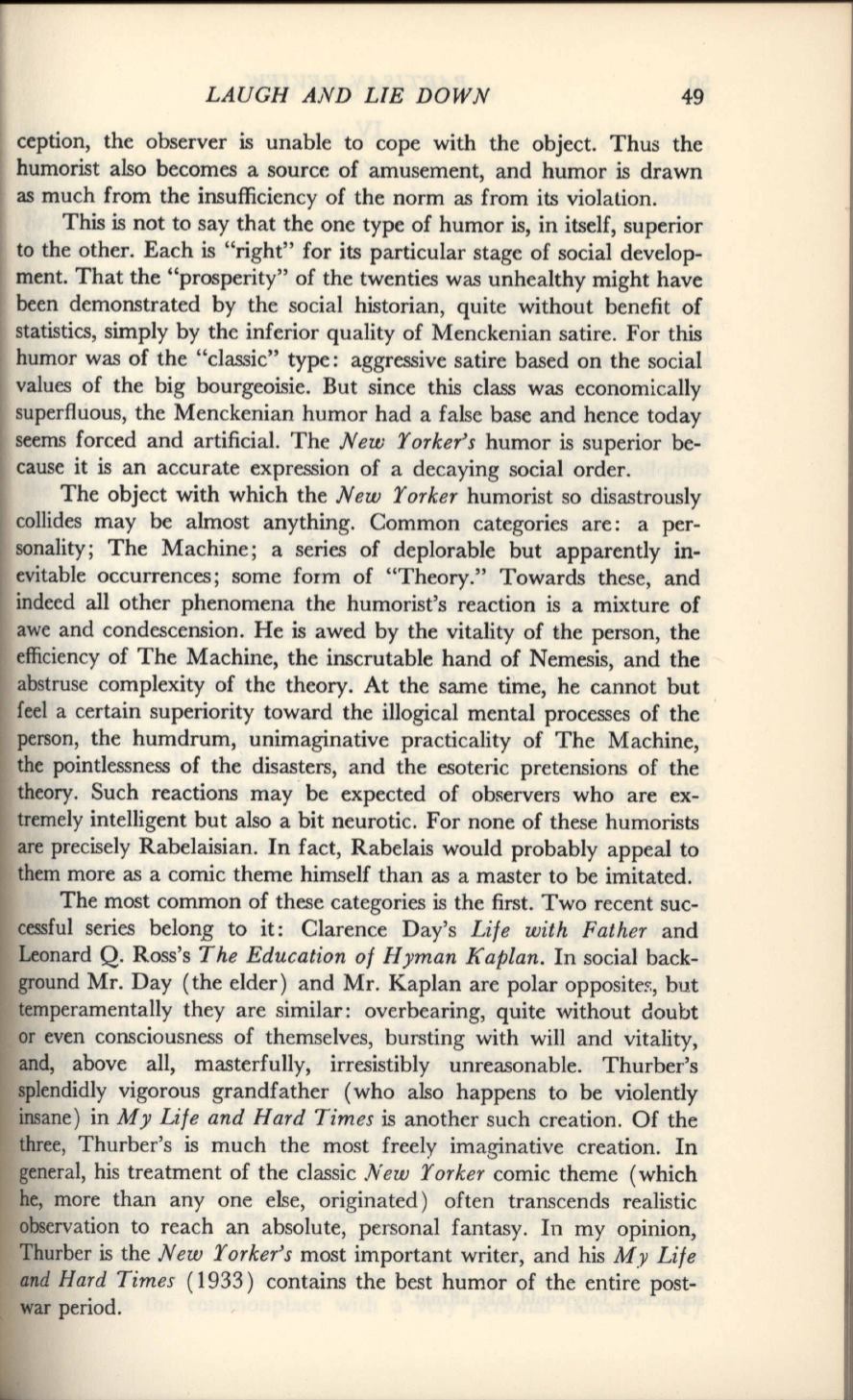
LAUGH AND LIE DOWN
49
ception, the observer is unable to cope with the object. Thus the
humorist also becomes a source of amusement, and humor is drawn
as much from the insufficiency of the norm as from its violation.
This is not to say that the one type of humor is, in itself, superior
to the other. Each is "right" for its particular stage of social develop-
ment. That the "prosperity" of the twenties was unhealthy might have
been demonstrated by the social historian, quite without benefit of
statistics, simply by the inferior quality of Menckenian satire. For this
humor was of the "classic" type: aggressive satire based on the social
values of the big bourgeoisie. But since this class was economically
superfluous, the Menckenian humor had a false base and hence today
seems forced and artificial. The
New Yorker's
humor is superior be-
cause it is an accurate expression of a decaying social order.
The object with which the
New Yorker
humorist so disastrously
collides may be almost anything. Common categories are: a per-
sonality; The Machine; a series of deplorable but apparently in-
evitable occurrences; some form of "Theory." Towards these, and
indeed all other phenomena the humorist's reaction is a mixture of
awe and condescension. He is awed by the vitality of the person, the
efficiency of The Machine, the inscrutable hand of Nemesis, and the
abstruse complexity of the theory. At the same time, he cannot but
feel a certain superiority toward the illogical mental processes of the
person, the humdrum, unimaginative practicality of The Machine,
the pointlessness of the disasters, and the esoteric pretensions of the
theory. Such reactions may be expected of observers who are ex-
tremely intelligent but also a bit neurotic. For none of these humorists
are precisely Rabelaisian. In fact, Rabelais would probably appeal to
them more as a comic theme himself than as a master to be imitated.
The most common of these categories is the first. Two recent suc-
cessful series belong to it: Clarence Day's
Life with Father
and
Leonard
Q.
Ross's
The Education of Hyman Kaplan.
In social back-
ground Mr. Day (the elder) and Mr. Kaplan are polar opposite~, but
temperamentally they are similar: overbearing, quite without doubt
or even consciousness of themselves, bursting with will and vitality,
and, above all, masterfully,
irresistibly unreasonable.
Thurber's
splendidly vigorous grandfather (who also happens to be violently
insane) in
My Life and Hard Times
is another such creation. Of the
three, Thurber's is much the most freely imaginative creation. In
general, his treatment of the classic
New Yorker
comic theme (which
he, more than anyone else, originated) often transcends realistic
observation to reach an absolute, personal fantasy. In my opinion,
Thurber is the
New Yorker's
most important writer, and his
My
Life
and Hard Times
(1933) contains the best humor of the entire post-
war period.


